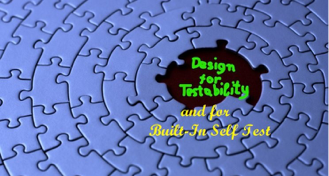Description
This web based course is a detailed review of the various guidelines covered in the SMTA/TMAG Testability Guidelines. Part 1 introduces the issues surrounding testing of electronic circuit boards and systems. It details the testing concept and the mix of testers normally used. This includes the JTAG/IEEE-1149.1 boundary scan as well as built-in self-test (BIST). With a combination of these technologies, the idea of non-intrusive board (and system) test is explored. The tutorial takes the view that DFT is the best way to improve test performance and cost effectiveness. Towards that end Part 2 provides specific DFT guidelines. It concludes with exploring new standards and developments in DFT that will improve testing of boards and systems in the future.
Part 1 – Understanding Test, Test Strategies
• Introduction
• Today’s (and Tomorrow’s) Boards and Systems
• Testing Philosophy and Economics
• Design for Testability: What, Why, How, Who and most importantly When?
• The Test Mix
• Environmental Stress Screening, HALT, HASS, Burn-In
• Qualification and Acceptance Testing
• Automated Inspections
• Optical Inspection (AOI)
• X-Ray Inspection (AXI)
• Thermal Characterization
• Connectivity Testing
• Manufacturing Defects Analysis (MDA)
• In-Circuit Testing
• Bed-of-Nails Access
• Flying Probe Test
• Boundary-Scan (JTAG/IEEE-1149.x)
• Functional Board Testing
• Built-In Self-Test (BIST)
• System Level Test and Diagnoses
• Field Support Testing
Strategies Towards “Non-Intrusive Board Test”
• Traditional In-Circuit followed by Functional Board Test
• Injecting Boundary Scan and BIST into the Traditional
Approach
• Testing to parallel design – a new paradigm
Part 2 – Implementing Design for Testability
Detailed review of the various guidelines covered in the SMTA/TMAG Testability Guidelines.
• Probing and Fixturing Guidelines
• Flying Probe Guidelines
• Vectorless Testing Guidelines
• AOI Inspectability Guidelines
• X-Ray Inspection Guidelines
• Electrical Design Guidelines
• Boundary Scan Guidelines
• Analog and Mixed Signal Guidelines
• Built-In Self-Test Guidelines
• Diagnoses and Support Guidelines
The Future of DFT
• How DFT makes sense… and dollars:
• IEEE 1687 and Hierarchical Test
• System JTAG (SJTAG)
• Design for eXcellence (DFX)
About the Presenter:
Louis Y. Ungar enjoys a well-known reputation in the electronics testing profession. He has built, programmed, and selected Automatic Test Equipment (ATE) for a large number of clients both in the commercial and military community. Having introduced the first university course on Automatic Testing and Design for Testability at UCLA, he and his company have taught similar courses to thousands around the world in publicly held forums, at company facilities and online. He has served on international standards committees, such as the IEEE. He led the Surface Mount Technology Association (SMTA) Testability Committee to publish the SMTA Testability Guidelines in 2002 and helped in the project to revise it several times since. He has helped develop an economic modeling tool, called The Test Flow Simulator and a testability management tool, called The Testability Director.


 DFT is a design discipline that benefits test engineering, manufacturing, logistics, field support and even Marketing. In addition to overall quality improvement and more reliable end products, a major benefit of DFT is earlier time to market, and that is a major concern of all managers. Anyone who can influence or be influenced by DFT will find this tutorial beneficial.
DFT is a design discipline that benefits test engineering, manufacturing, logistics, field support and even Marketing. In addition to overall quality improvement and more reliable end products, a major benefit of DFT is earlier time to market, and that is a major concern of all managers. Anyone who can influence or be influenced by DFT will find this tutorial beneficial.